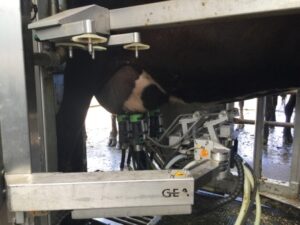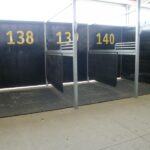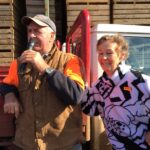Osteoporosis! This was the topic of a well attended information session WOFWG organized for its members. As many such members have experience with animal nutrition, they also know the importance of their own dietary health.
Two endocrinology specialists, Drs Alicia Jones and Frances Milat, doing research out of Monash Medical Centre, gave a valuable and eye opening talk about this disorder. Osteoporosis essentially means fragile bones. This condition can lead to ready fractures, to more falls and to avoidable trauma for sufferers and their families.
The causes, diagnosis, prevention, treatment and incidence of osteoporosis were all covered in factual detail.
A disturbing research finding was that Gippsland has the highest incidence of hip fractures per capita in Victoria. This fact had WOF members speculating on why this is so. Is it diet, lifestyle, genes, bad luck or a combination? Alicia and Frances added that their work to find an explanation is under way. They also emphasized that a key aspect of their work is to improve the availability of bone health services to country dwellers, not just those in urban Australia.
Adequate intake of calcium rich foods, augmented by a supplement, access to sunshine for vitamin D or supplementation with tablets, plus weight bearing exercise are all part of healthy management routines. Bone density scans are recommended and are covered at no cost for those over 70 years old.
While osteoporosis might be seen more in older folk, it can occur in much younger ones too, especially in response to excessive intake of cortisone medication and caffeine drinks. Good news is that dairy products and a farming, outdoorsy lifestyle, both features of Gippsland living, are recommended. Alicia and Francis indicated that they were pleased to have a chance to present to a group of local women and that they would be happy to be invited to further such information sessions held by any group in the area.
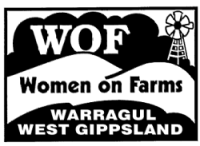





 ‘Umtali’ is a 30.62 hectare property located in Ellinbank and was owned by Jenny & Brian Tucker.
‘Umtali’ is a 30.62 hectare property located in Ellinbank and was owned by Jenny & Brian Tucker. Honey with onion? What sort of recipe is that?
Honey with onion? What sort of recipe is that?


















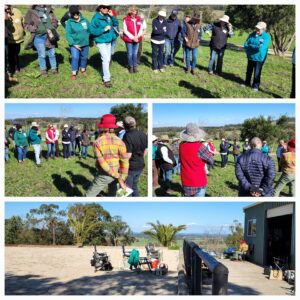


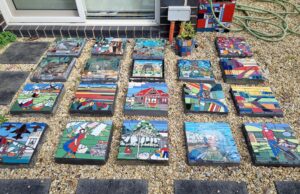


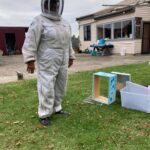








 The members were finally able to gather outdoors after many periods of lockdown due to Victoria’s Covid 19 restrictions. Our meeting was held at the shelter at the Cannibal Creek reserve, and Lyn Link was able to update us on their progress after the Bunyip Fires of March 2019. After numerous repairs and reinstatement of fences, clearing of burnt trees, management of regrowth weeds, then re vegetating some of the areas they were making good progress with returning the property to its former state. However, the recent strong winds have proven to create yet another hurdle, as many of the dead trees have now fallen and come down across their newly reinstated fence lines. Pastures have returned, and they have cattle grazing the paddocks once again.
The members were finally able to gather outdoors after many periods of lockdown due to Victoria’s Covid 19 restrictions. Our meeting was held at the shelter at the Cannibal Creek reserve, and Lyn Link was able to update us on their progress after the Bunyip Fires of March 2019. After numerous repairs and reinstatement of fences, clearing of burnt trees, management of regrowth weeds, then re vegetating some of the areas they were making good progress with returning the property to its former state. However, the recent strong winds have proven to create yet another hurdle, as many of the dead trees have now fallen and come down across their newly reinstated fence lines. Pastures have returned, and they have cattle grazing the paddocks once again. 




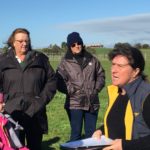
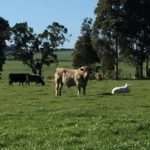
 View more photos
View more photos 







 Rachel Needoba, a past member of Women on Farms, has started a small factory producing milk, yoghurt, cultured cream and butter. She sources the milk from a farm near Poowong.
Rachel Needoba, a past member of Women on Farms, has started a small factory producing milk, yoghurt, cultured cream and butter. She sources the milk from a farm near Poowong.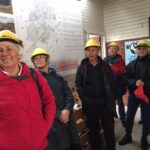


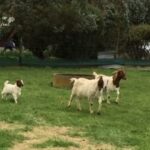

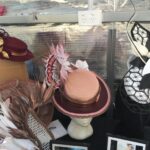
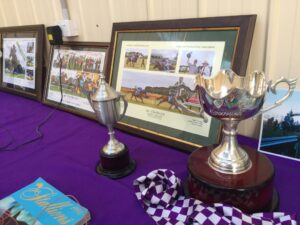


 While we live in a traditionally cattle farming area, both dairy and beef herds, there has been an increased presence of goats. With their versatility as providers of meat, milk, fleece and companionship, goats are clearly popular animals. Goat meat is a valuable protein for a huge percentage of the world’s population. Still in the ‘niche’ category in Australia, goat flesh is gaining popularity.
While we live in a traditionally cattle farming area, both dairy and beef herds, there has been an increased presence of goats. With their versatility as providers of meat, milk, fleece and companionship, goats are clearly popular animals. Goat meat is a valuable protein for a huge percentage of the world’s population. Still in the ‘niche’ category in Australia, goat flesh is gaining popularity.